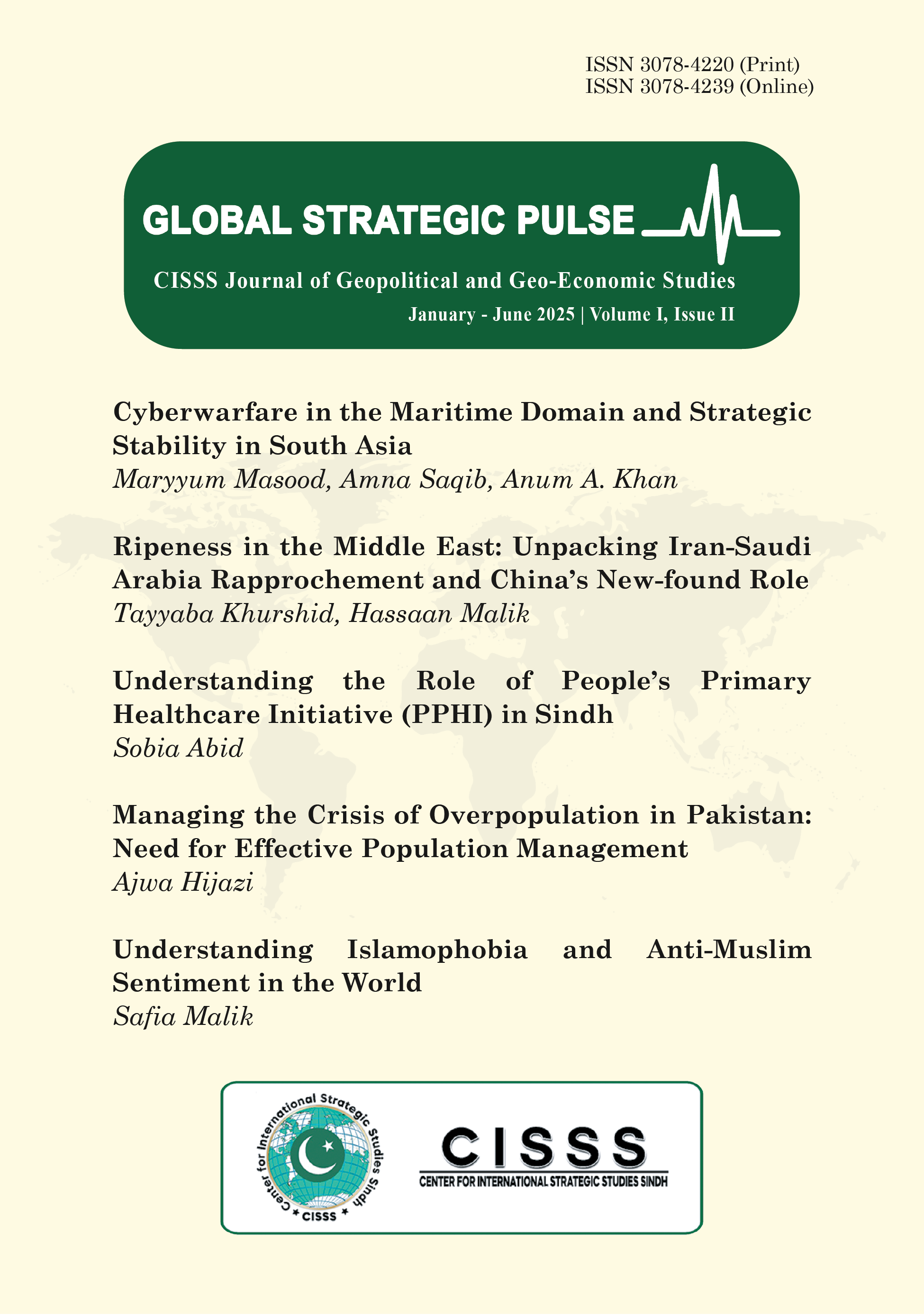Ripeness in the Middle East: Unpacking Iran-Saudi Arabia Rapprochement and China’s New-found Role
Keywords:
Iran, Saudi Arabia, Middle East, China, Ripeness Theory, Conflict ResolutionAbstract
Ever since the Iranian Revolution (1979), Iran and Saudi Arabia have tussled for regional dominance. Their competition defines the Middle Eastern conflict dynamics, for the region’s many armed conflicts–Yemen, Iraq, Syria, and Lebanon–have become their battleground. The two sides broke diplomatic relations in 2016. Whereas the past attempts at cooling down the conflict failed, China successfully mediated a tripartite peace agreement on 10th March 2023 between Iran and Saudi Arabia. The paper employed the Ripeness theory of conflict resolution to explain the successful rapprochement. By applying qualitative research methodology, it is argued that decision-makers in Tehran and Riyadh perceived a mutually imminent catastrophe (IMC). This, together with systemic factors, ripened the conflict for resolution. Lastly, it is argued that China’s mediation was motivated by its ambition to regain its historical role and hence, not meant to challenge the United States.

Downloads
Published
Issue
Section
License
Copyright (c) 2025 Tayyaba Khurshid, Hassan Zubair Malik (Author)

This work is licensed under a Creative Commons Attribution 4.0 International License.
All articles are permanently available online to the public without restrictions or subscription fees. All articles are free to be used, cited, and distributed, on condition that appropriate acknowledgement is included. Authors are the copyright holders of their original contributions. The published article is simultaneously licensed under a Creative Commons (CC) Attribution License. “A CC license is used when an author wants to give people the right to share, use, and build upon a work that they have created” Wikipedia.

